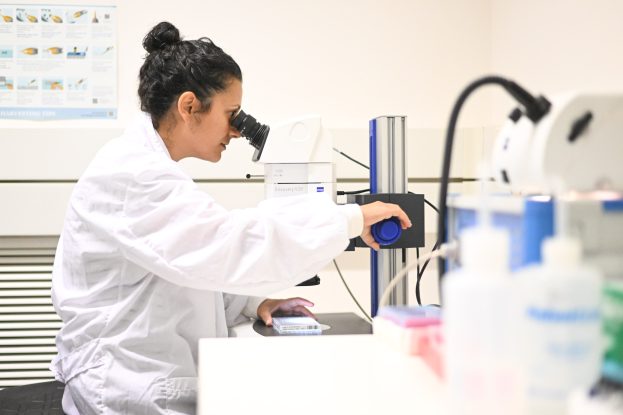
About


Our Mission
The primary mission of TCSB is to facilitate and engage in the training and development of Structural Biology research at the Technion, enabling researchers to conduct cutting-edge structural investigations at the molecular level. To achieve this goal, the center offers both expertise and state-of-the-art infrastructure for high-resolution macromolecular crystallography, computational and biophysical research allowing insights on Biology at the atomic level.
The Role of Structural Biology
Technological advances for unraveling genome sequences allow scientists to map the genetic basis for life. Current and future challenges evolve around understanding the roles of distinct DNA sequences that encode for specific biological macromolecules, such as proteins and RNA, which are in charge of most of the biological processes in living organisms.
Structural Biology is a branch of life sciences that addresses the huge challenge in understanding the role of the many thousands of biological macromolecules, by deciphering their distinctive three-dimensional structures.
Since each macromolecule has a unique structure that dictates its distinctive biochemical activity, revealing its three-dimensional structure, at the molecular level, is crucial for fully understanding its function. Furthermore, the structure could further play a key role in therapeutics by enabling protein engineering and drug design.
X-ray Crystallography
X-ray Crystallography, the leading technique for atomic high-resolution studies of biological molecules, utilizes X-rays to determine their three dimensional structures. This technique relies on the diffraction of X-rays by the orderly array of molecules within a crystallized sample, in order to reveal detailed structural information of the molecule.
The detailed atomic structure enables scientists to understand, in depth, the details of the molecular interactions, highlighting function and dynamics.
Computational Structural Biology
Computational structural biology aims to characterize the structural and dynamic properties of macromolecular systems, essential for the understanding of their biological functions. Advanced molecular modeling and simulation technologies enable the study of biomolecular interactions and dynamics. Computational methods and modelling techniques are complementary to experimental approaches and together they provide a comprehensive understanding of the mechanisms underlying biomolecular function.
Protein Characterization and Biophysical Techniques
Protein characterization can provide complementary insights into protein function, stability, interactions, and conformational changes. Techniques such as NanoITC (Isothermal Titration Calorimetry), MST (Microscale Thermophoresis), and NanoDSF (Differential Scanning Fluorimetry) are essential tools in the field of structural biology. NanoITC measures the heat changes during molecular interactions, providing insights into binding affinities and thermodynamics. MST analyzes the movement of molecules in temperature gradients to assess binding events and interaction strengths. NanoDSF evaluates protein stability and folding by monitoring changes in fluorescence during thermal denaturation. Together, these techniques offer comprehensive data on protein behavior, stability, and interactions, informing the development of therapeutics and advancing our understanding of biological systems.
Protein Purification
Purifying proteins to high homogeneity is a fundamental step in preparing samples for structural and biophysical studies. Chromatography-based techniques, such as those implemented in ÄKTA Avant systems, are widely used for efficient and reproducible protein purification. High-quality protein samples are essential for experiments such as binding assays, crystallization, and structure determination. Advanced purification methods ensure that proteins are isolated in a functional state, enabling downstream applications including X-ray crystallography, ITC, and other biophysical analyses.


